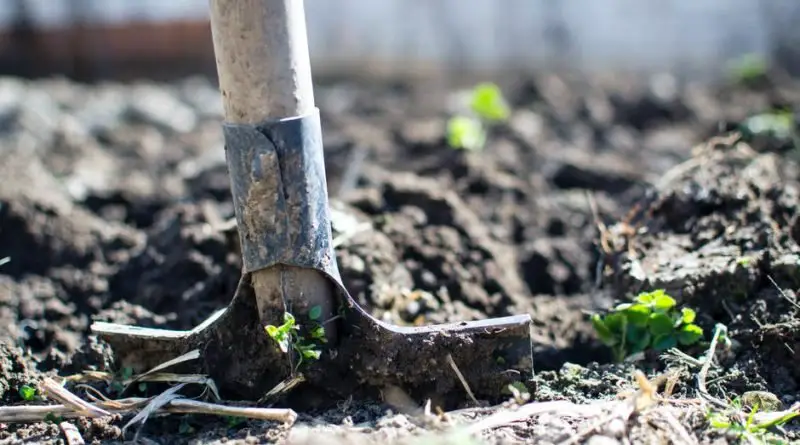Last modified on September 17th, 2020 at 7:41 am
Want Rich Crops? Here’s Why Soil Analysis Is Important
In recent months, Americans everywhere have turned increasingly to gardening as a way to cope with turbulence and become more self-sufficient.
If you’re one of them, you’re bound to find joy and peace in the bountiful world of gardening! However, you’re also bound to hit a few roadblocks along the way.
Gardening is often a trial-and-error process. In those early stages, you’re learning a lot about your little seedlings and what they need to grow, as well as what will kill them before they’ve matured.
Soil analysis is a great way to eliminate some of that guesswork. Read on to learn more about what soil analysis is and why it’s a smart move for gardeners of any skill level.
What Is Soil Analysis?
Soil analysis (sometimes referred to as soil testing) is a method that allows you to assess the pH level of your soil as well as any nutrient deficiencies. This is something that you’ll want to do at least once a year, preferably in the fall. Some gardeners will use soil analysis at the beginning of every growing season or anytime they begin a new bed or work with new soil.
As plants grow in soil, they use the nutrients they can find there to start and maintain their root system, develop healthy foliage, and produce flowers, fruits, and true leaves. While they may not use all of those nutrients up, they’re not able to put back everything that they take. For that reason, you may find that you have a great summer growing season but your fall and winter crops, planted in the same place, don’t perform as well.
With soil analysis, you can find out why. Plus, soil analysis is an inexpensive method that will vastly improve your gardening outcomes. To find out more about available soil analysis kits, see here.
The Benefits of Soil Testing
Gardening isn’t just about sunlight and water. Your plants are influenced as much by the earth they grow in as the water they drink and the sun they receive!
Soil testing helps you to ensure that your plants are growing in an environment that will allow them to thrive. Knowing the pH balance and possible nutrient deficiencies will provide the insight you need to make proper gardening choices. Believe it or not, this will save you both money and time!
Let’s take a closer look at how soil analysis will take your gardening skills to a 10.
Plant In The Right Places
Most plants, from flowers to vegetables to grasses, prefer mildly acidic soil, which falls in the range of 6-6.5 pH. However, there are a handful of plants like blueberries and azaleas that love very acidic soil.
If you test your soil and find that some areas are more acidic than others, you may not have to make a ton of adjustments. Instead, focus on which of your plants prefer a higher pH and plant accordingly. Why mess with your soil’s current balance if, instead, you can simply factor in a little bit of extra planning and research from the start?
Rejuvenate Your Soil
As we mentioned earlier, your plants and crops will use up a lot of the key nutrients like nitrogen, phosphorous, and potassium. However, if your soil has been sapped of its nutrients, you don’t necessarily have to toss it out and replace it in full.
Instead, consider starting a compost pile somewhere in your yard. When you have nutrient-deficient soil, toss it into your compost along with a hearty helping of vegetable and fruit scraps as well as carbon-rich materials like newspaper, paper towels, and shredded paper. (Avoid meat products, dairy products, and glossy ads or magazine pages which can all sour your compost.)
As the compost breaks down into your used up fertilizer, it will absorb some of those nutrients that are only bioavailable to your plants when they’ve decomposed. Don’t expect to have usable soil after only a few weeks of composting, but save yourself some trouble and money next growing season by rejuvenating old soil.
Alternatively, if you know what nutrients are missing but the soil isn’t completely spent, you can use fertilizers to bring the soil back to life. Select your fertilizers wisely based on the nutrients they provide.
When you look at different fertilizers, you’ll notice that they’re assigned a series of numbers such as 5-10-5 or 15-5-10. The first number represents the nitrogen in the fertilizer, the second represents phosphorous, and the third represents potash. These are the primary nutrients in most standard fertilizers.
Avoid Over-Fertilizing
Did you know that it’s possible to over-fertilize your crops? In some cases, you are providing the plant with too much growth and the root system becomes insufficient, leading the plant to a promising spurt followed by an early death. In others, you can actually “burn” the root system, which will have the same effect.
If you know how nutritious your soil is, to begin with, you can determine whether or not you need fertilizer at all. A well-balanced soil can sustain plenty of plants on its own and using fertilizer is both a waste of money and a potential hazard to the plants you’ve worked so hard to grow.
Rely On Soil Analysis This Growing Season
Whether you’re a new gardener or an old gardener looking to learn some new tricks, soil analysis is a great method to incorporate into your practice. With a small up-front cost and minimal effort, you can save yourself money, time, and disappointment over the course of the growing season to come.
Do you love the planet as a whole as much as you love the little ecosystem you’ve built in your backyard? Take a look at the rest of our page and see what else catches your eye!




